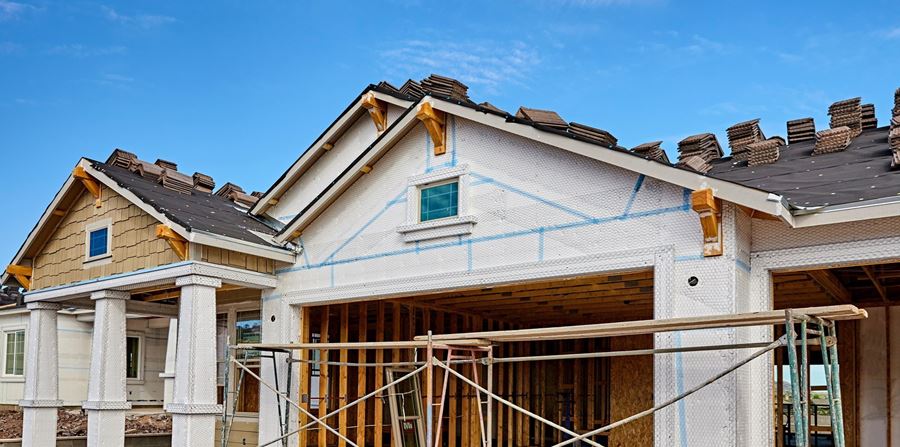EIFS: Special Considerations for OSB Sheathing and Adhesives

Exterior Insulation and Finish System (EIFS) is an exterior wall cladding system that consists of field-applied rigid foam insulation panels on the outside of a building's wall framing and sheathing, which is then coated with a thin layer of synthetic stucco.
Architects and engineers have historically provided insulative materials between or inside structural elements. Contrarily, EIFS applies them to the exterior of the structure. Insulating a building from the exterior made EIFS the precursor to the Continuous Insulation strategies now common in building energy codes, especially in dry and northern climates, and in buildings designed for higher energy efficiency.
Special Provisions Related to Oriented Strand Board (OSB) Wall Sheathing
Masonry, exterior-rated gypsum board, cement board, plywood, and OSB are examples of acceptable substrates. Each comes with certain additional requirements including minimum thicknesses and conformity to specific industry standards. However, the EIFS industry is particularly concerned with the use of OSB as a substrate supporting an EIFS installation.
OSB is comprised of wood strands that are arranged in cross-oriented layers and held into place with a special adhesive. There are special provision considerations for when the insulation board is attached to the sheathing. The attachment of the insulation panel to the building sheathing, or substrate, is critical for the successful performance of the EIFS. The primary consideration of the various substrates is their performance when exposed to water.
In contrast to plywood, which retains the grain orientation of the wood such that water can spread laterally to facilitate drying, the cross-orientation of the wood strands in OSB causes it to retain water for a longer period. This can result in accelerated deterioration of the OSB when exposed to water and a weakening of the bond with the EIFS insulation panels.
To address these concerns, manufacturer installation guidelines generally provide two specific requirements when attaching EIFS to OSB sheathing. The first is that the OSB must be coated with a fluid-applied air/water-resistive barrier that is also vapor-permeable to prevent water accumulation within the OSB. The second guideline, which varies with each manufacturer, is geographical restrictions on where OSB can be used. In areas where climate conditions exist that promote wood decay, such as high humidity and rainfall such as in the southeast, OSB is not a desired sheathing for EIFS.
While these requirements may seem straightforward, they can be overlooked, particularly when a field substitution is made to replace plywood sheathing with OSB. Issues arising from improper preparation of the OSB include detachment of the EIFS installation from the building, moisture intrusion, and deterioration of the OSB and/or EIFS.
Attaching Insulation Boards to Sheathing (Vertical Troweling)
When the insulation boards are attached to the exterior wall sheathing using an adhesive, the adhesive is typically troweled onto the back of each insulation board. To facilitate drainage of any water infiltrating behind the insulation panels, the manufacturer’s installation instructions specify that the adhesive be placed in a vertically troweled configuration. Additional requirements are also commonly specified regarding the trowel sizing which is dependent on the specific type of adhesive that is used. The vertical configuration and properly sized trowels allow the water to freely move down the wall and out at the through-wall flashing.
It is relatively straightforward to maintain the vertical troweling for insulation boards within an open field of the exterior wall where there are no obstructions. However, in tight conditions, such as between windows, around doors, or at other terminations, the vertical troweling can be hard to maintain. Instead, the installer may be tempted to just get the insulation board to adhere to the wall and hope for the best. Unfortunately, if a dam is created, any infiltrating rainwater will hold the water against the wall and promote interior water intrusion. Further, the damming condition often corresponds with more vulnerable locations, such as windows, doors, or other areas where supplementary flashing is required, such that the water will quickly find a way into the interior of the building.
EIFS cladding can be an energy-efficient cladding system that offers building owners and design professionals an aesthetically pleasing option. Like any building material, proper installation practices must be followed to prevent commonly encountered problems that affect the long-term functionality of the system, and accompanied by a proper maintenance program.
Nuestros consultores están listos para ayudar.




